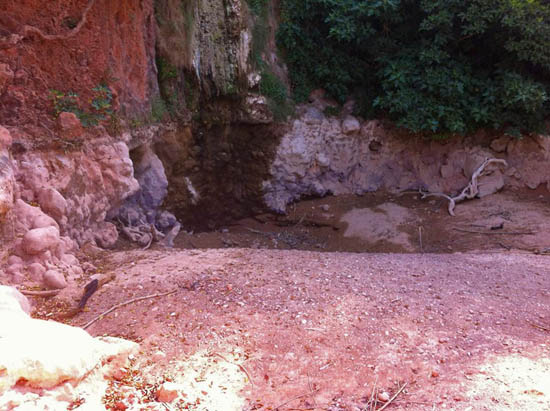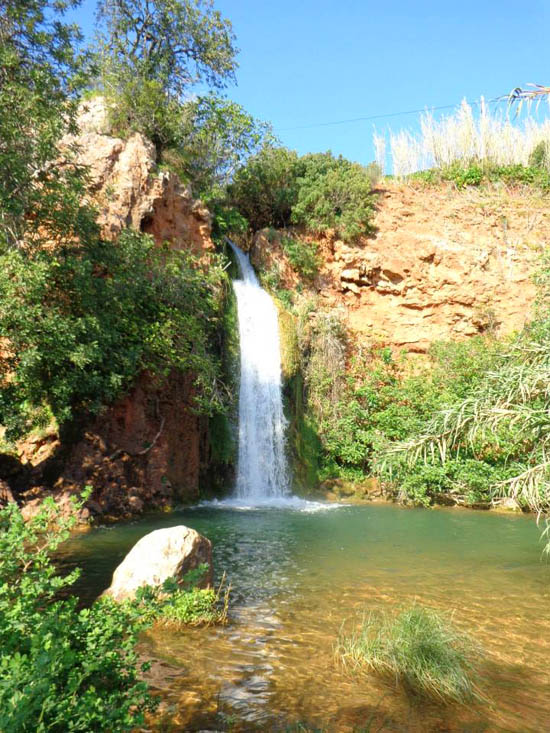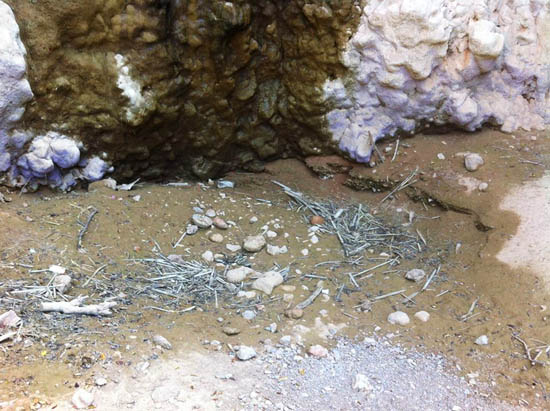
The waterfall and the Vigário catchment, near Alte, are dry because of the year with almost no rain and not because of an illegal diversion of water. The guarantee was given to the Sul Informação by Paulo Cruz, Head of Division of the Portuguese Environment Agency/ARH Algarve.
Paulo Cruz explained that the lack of water in the small waterfall and in the catchment, whose photos have been circulating on social networks in recent days, causing a wave of indignation, are "a natural manifestation and a consequence of this being a drier year."
The stream where the Queda do Vigário is located is fed by the same spring as the Fonte Grande de Alte. Between this spring and the catchment «there are some water intakes, small intakes for vegetable gardens, a reinforcement intake from the Loulé Council and, with our license since 2014, a more recent intake, from a farm with an orange orchard, installed in the floodplain area'.
This farm has been accused, on social networks, of being at the origin of the lack of water in the Queda do Vigário and the respective catches, thus jeopardizing this leisure area in the village of Alte. But the person in charge of the APA/ARH guarantees that this is not the case.
“The Alte springs are fed by the aquifer, which has a relatively low storage capacity. Since 1978, flow measurements have been taken, semiannual or quarterly, and, throughout this series of data, it appears that the one caught has already dried several times, because there is great variation in the flow, between dry and rainy years».

"Throughout recent and even older history, as older people tell us, this situation of drought is not unprecedented," stresses Paulo Cruz.
This situation of «conflict in the use of water», between those who would like to have the Vigário fall and get caught with water, to maintain the small bathing and leisure area, and agricultural use, to irrigate a new orange grove recently planted , in an investment of large thousands of euros financed by PRODER, «it's the first time we've come across it», admits the official.
In fact, he said, «the water that goes to irrigate the orchard does not continue in the stream, that is, it is just another water consumer in this stream. Due to the drier period we are experiencing, this new consumption should have contributed to reducing the flow».
“The question that arises is whether there is a situation here that justifies an intervention or not. And what intervention? We have to consider what this is about. Considering the hierarchy of uses, which tells us that, first, there is public supply, second, livestock and agriculture with permanent crops, namely orchards, and only after leisure uses, it is concluded that, in terms of uses, there is no reason to restrict or condition an agricultural crop to keep water in the catch for some more time», added Paulo Cruz.
The head of the APA/ARH Division added, in his statements to the Sul Informação, that the farmer in question 'had already asked, before this issue arose, to build a new borehole which could reinforce the water for irrigation'.
The APA/ARH, the body that oversees these water issues, was alerted to the drought of the fall and the capture of the Vigário by the Alte Parish Council, which was itself being confronted with complaints.
On Monday, APA/ARH technicians went to the site to confirm and assess the situation. «In the middle of the afternoon, the fall had some water and the catch was not completely dry».

However, admits Paulo Cruz, “this is being a dry year. It is mid-July and it is not expected that, at least until October, it will rain significantly. Therefore, the situation will only get worse in the fall of Vigário. Even the flow from other sources in Alte will tend to decrease».
In short: the use of water to irrigate the orchard and other uses “contributed to reduce the flow downstream” of Queda do Vigário, a situation that, during the summer, “will only get worse due to the dry year”. The APA/ARH is “following the situation more closely, given the expression of concern from various entities” and will “try to release flows, but there is no guarantee that it will be able to do so”.
One thing is certain: the APA/ARH does not consider “the possibility of annulling the farm's water catchment license, because that would compromise the future of that investment”.
As for the fall and catch of the Vigário, like many other small waterfalls and streams in the Algarve, which dry up or reduce their flow during the summer, especially in dry years as was the case, they will be back as soon as it starts to rain again. There will be fewer baths in the Alte area, but, on the other hand, the new orange grove will not be allowed to die, which provides employment and guarantees agricultural use in the fertile floodplain.


















Comments